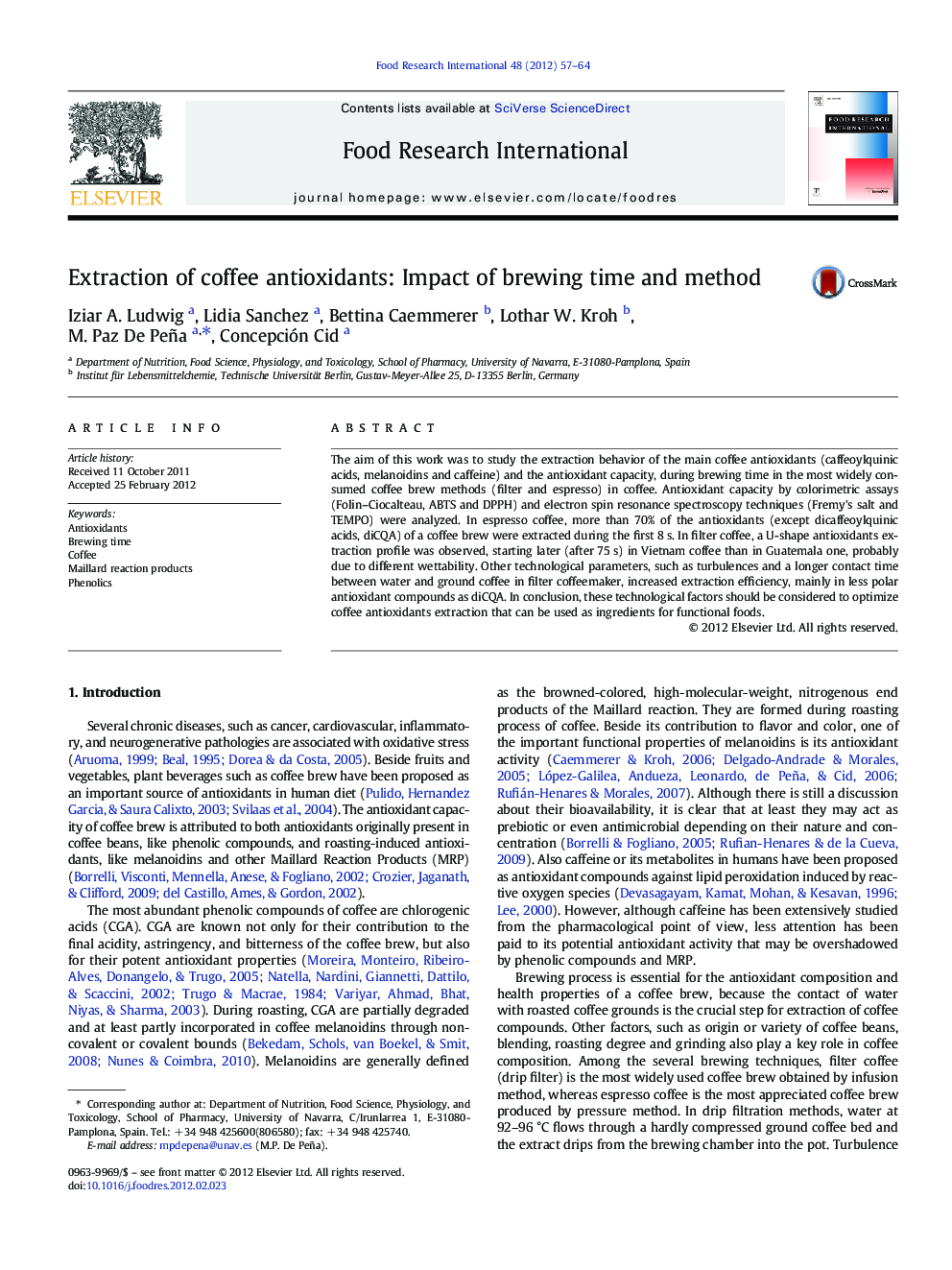| کد مقاله | کد نشریه | سال انتشار | مقاله انگلیسی | نسخه تمام متن |
|---|---|---|---|---|
| 6399237 | 1330690 | 2012 | 8 صفحه PDF | دانلود رایگان |

The aim of this work was to study the extraction behavior of the main coffee antioxidants (caffeoylquinic acids, melanoidins and caffeine) and the antioxidant capacity, during brewing time in the most widely consumed coffee brew methods (filter and espresso) in coffee. Antioxidant capacity by colorimetric assays (Folin-Ciocalteau, ABTS and DPPH) and electron spin resonance spectroscopy techniques (Fremy's salt and TEMPO) were analyzed. In espresso coffee, more than 70% of the antioxidants (except dicaffeoylquinic acids, diCQA) of a coffee brew were extracted during the first 8Â s. In filter coffee, a U-shape antioxidants extraction profile was observed, starting later (after 75Â s) in Vietnam coffee than in Guatemala one, probably due to different wettability. Other technological parameters, such as turbulences and a longer contact time between water and ground coffee in filter coffeemaker, increased extraction efficiency, mainly in less polar antioxidant compounds as diCQA. In conclusion, these technological factors should be considered to optimize coffee antioxidants extraction that can be used as ingredients for functional foods.
⺠High water pressure increases antioxidants extraction speed in espresso coffee. ⺠Dicaffeoylquinic acids were released more slowly than the other antioxidants. ⺠U-shape antioxidants extraction profile was shown in filter coffee delayed in Robusta. ⺠Turbulences and longer contact time in filter coffeemaker favor extraction efficiency.
Journal: Food Research International - Volume 48, Issue 1, August 2012, Pages 57-64